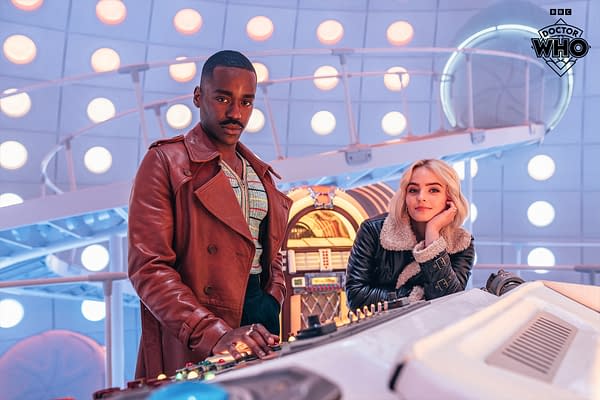Posted in: BBC, Doctor Who, TV | Tagged: bbc, christopher eccleston, david tennant, doctor who, jodie whittaker, matt smith, Murray Gold, peter capaldi, russell t davies, segun akinola, tardis
Doctor Who: Why The Doctor Is Incomplete Without Their TARDIS
Doctor Who is defined as much by the TARDIS as it is by the Doctor & their companions, helping shape the identity of the show - and its hero.
Article Summary
- The TARDIS is central to Doctor Who, shaping the show's unique identity.
- Various TARDIS interiors mirror the evolving Doctor and technological eras.
- Jodie Whittaker's TARDIS design presented a distinctive, challenging set.
- The Doctor's grand theme music complements their profound bond with the TARDIS.
Doctor Who is not just a time-traveling immortal. The Doctor is not complete without the TARDIS. The latter is a huge part of the series' identity. Without it, The Doctor would have just been another generic hero from the 1960s to the 1980s. It's the sheer surreal oddness of the TARDIS that gives the show its real identity, a ship that looks like an ordinary police box that was common on the streets of Britain until the 1970s but houses an entire ship on the inside. It's a metaphor for the show itself: a seemingly mundane thing that hides infinite imagination.

It's funny to consider that the original TARDIS was quickly cobbled together on a tiny budget that evolved into an increasingly elaborate and baroque design that never strayed from its original – unintended – metaphor for both its hero and the show. As budgets got larger and the series kept up with the times, the design had to reflect the increasingly high-tech feel of the era. By the 1980s, the TARDIS console started to look like it had computers with screens and a keyboard. When Russell T. Davies revived the show in 2005, the TARDIS interior began to reflect the Doctor more as the series went along. The production had a larger standing set for the TARDIS, so the interior got bigger; the Ninth and Tenth Doctors (Christopher Eccleston and David Tennant) got a semi-organic coral design that was otherwise no-nonsense and practical.
Then it changed into a cozier, almost homey design for the Eleventh Doctor (Matt Smith) and a darker, more steampunk design for the Twelfth Doctor (Peter Capaldi). The Thirteenth Doctor (Jodie Whittaker) got an odd, rounded, asymmetrical design with crystals all over and a console that looked even more steampunk and cobbled-together that was rumoured to be a nightmare for the camera crew because it was extremely hard to light for and get a good angle for the actors. The newest TARDIS interior, showing off the show's even bigger budget, reflects comfort and looks like, well, an Apple Store with lights that change to reflect the mood, including reflecting LGBTQ flag colours. In the novelisations of the 60th Anniversary Specials, the TARDIS can even change what the air smells like. And through it all, the TARDIS never lost its womb-like feel or symbolism – it was always the Doctor and companions' safe place. That's what the latest BBC compilation video keeps showing.

There's a third element that makes the Doctor and the TARDIS complete that helps define the show now, and that's the music. There's always a grand theme, usually a variation of the current Doctor's theme, to accompany the Doctor and companions' entry to the TARDIS for the first time. Composers Murray Gold and the underrated Segun Akinola always came up with a grand, epic surge in those moments that also encapsulate the show. It shows just how much thought is put into everything in Doctor Who.














